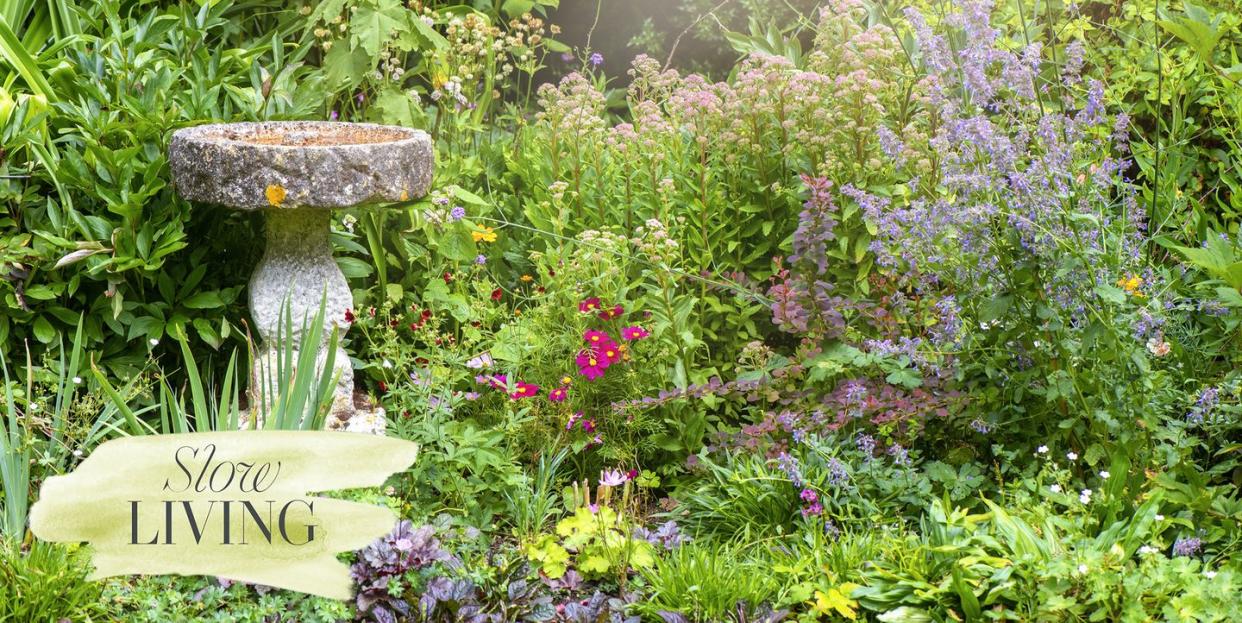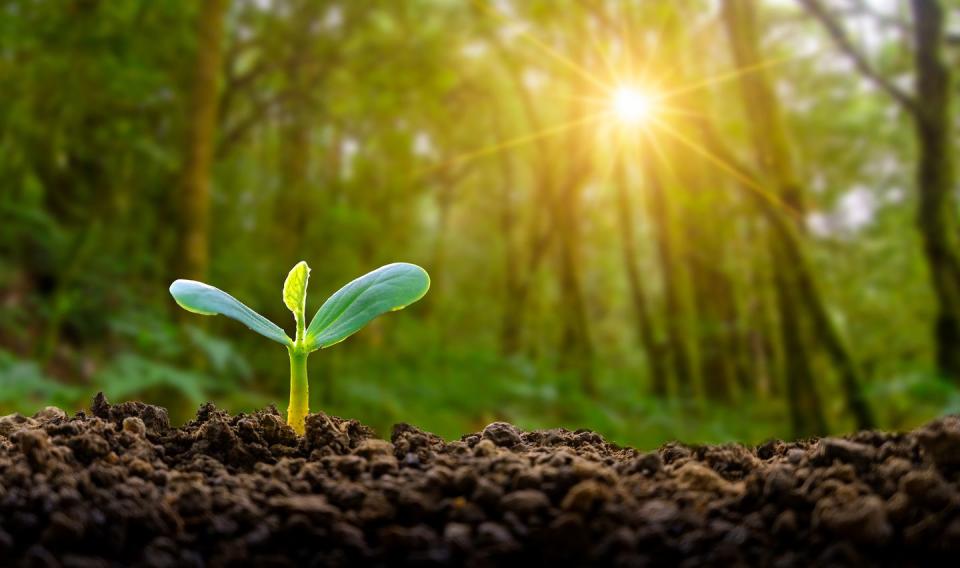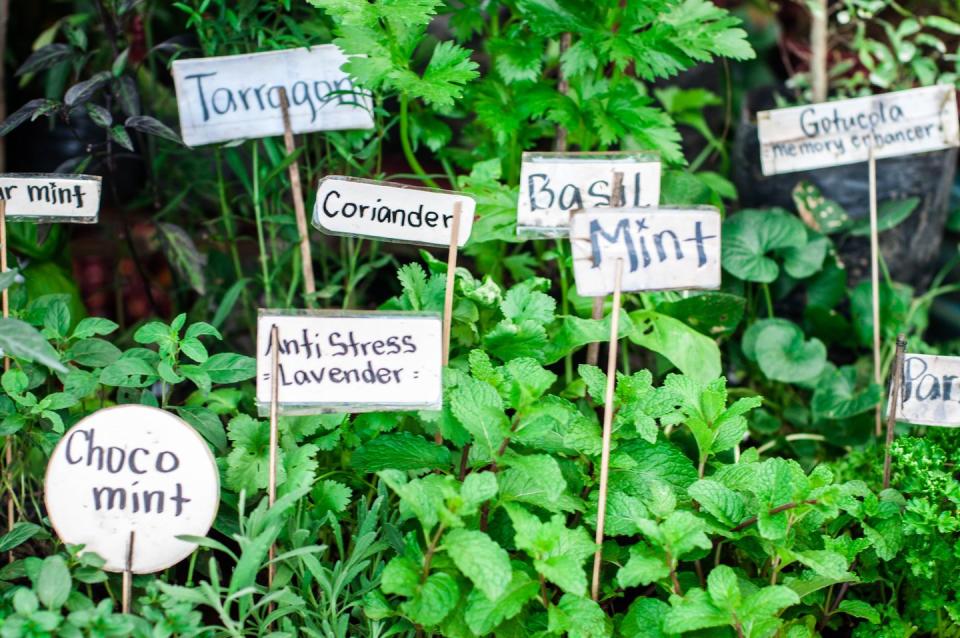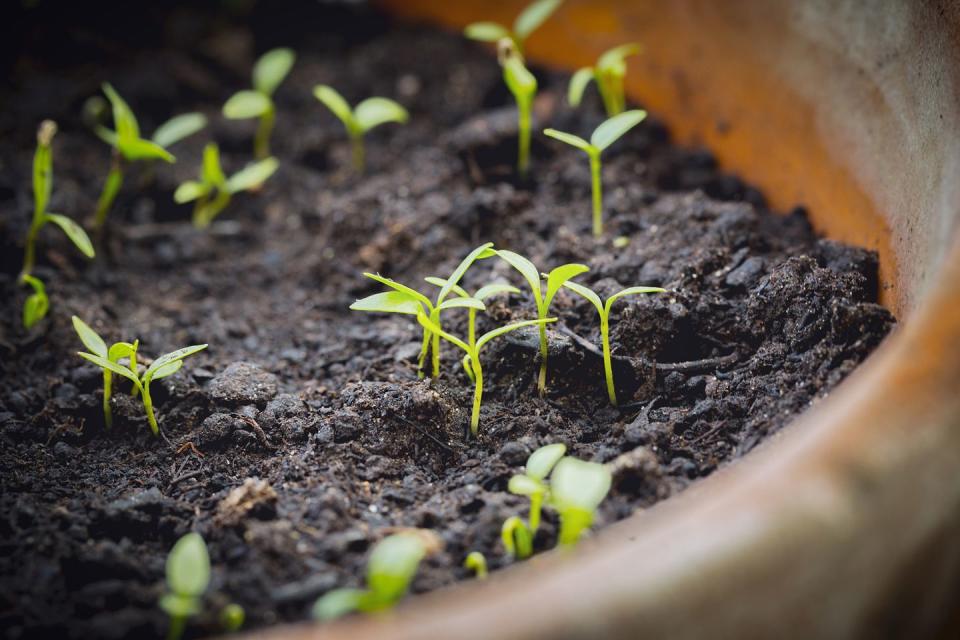How to embrace slow gardening in 2023 and benefit yourself and your garden

It’s thought that slow gardening emerged in the 1980s, taking inspiration from the Slow Food movement (founded it Italy by Carlo Petrini). It’s also a book you can buy by Mississippi gardener Felder Rushing, who unlike his name suggests, promotes a simple, no-stress approach to gardening via his radio show and published work.
When approaching a new garden, it can be tempting to want all the elements and want them immediately – just like the garden makeover shows. But our love of speed usually comes at the expense of the environment, and fast gardening is no different.
Our desire for fully-grown plants means gallons upon gallons of fertiliser, destruction of peatlands for compost and soaring emissions from heated greenhouses and transport – not to mention the millions of plastic pots that will survive into the next millennium. Whereas, writes Monty Don, “slow gardening is subtle and considerate, gently steering and nurturing the garden rather than bullying it into some kind of chorus-line display.”

For writer, podcaster and garden coach Andrew Timothy O’Brien, author of the new book To Stand and Stare; how to garden while doing next to nothing (out in February) the pitfalls of our fast-paced lives are plain for all to see:
“I'm sorry to say, it's sickness – in our minds, our bodies and the kind of malaise in society at large that we're seeing right now. We're not built to live in isolation from the natural world, but modern life pushes our experience of nature into tiny pockets we think of as optional leisure activities. It's no way to live, and the proof of that can be seen in every classroom, doctor's waiting room and right across the shiny screens of social media.”
His new book is not so much about what to do in the garden, but how to be.
“There's a lot to be said for building a few quiet moments into every day, where we can exercise curiosity, appreciation and joy, and don't have to feel a need to have opinions or answers. I'm convinced we'd all be far happier as a result.”
6 ways to join the slow gardening movement
1. Adopt a mindful mindset
“Mindful gardening. by its very nature. is the practice of being present in the garden, observing our surroundings and focusing on the task in hand. Doing this automatically helps to calm us and slow down a racing mind which, in turn, helps us to physically slow down,” says Lucy Spry, who offers practical tips and advice on mindful gardening via her instagram account @mindful.gardener.
The self-confessed plant addict finds the mindful approach hugely beneficial to her mental health. She suggests that even tasks like watering, weeding, digging and pruning can have benefits on your mood if you slow down to enjoy them rather than falling into auto-pilot mode.
“I can honestly say that the benefits I’ve felt from taking a more mindful approach to gardening have been immeasurable. I have suffered with my mental health on and off for 24 years and, when I have severe bouts, it can be debilitating. When I’m struggling, a good gardening session lifts my mood and somehow I always feel lighter at the end of it.”
2. Engage your senses
Don’t just gravitate towards plants that look good on Instagram. Consider smell (think lavender, thyme and sweet peas), sound (swaying grasses), taste (herbs, fruit, veggies or edible flowers), and different textures (ferns for shady spots, succulents for sunnier patches). Create a feast for all the senses and carve out some time to take it all in.

For Spry, this kind of immersion in nature is a definite mood-booster. “Being fully present in the garden and experiencing all the sights, sounds and smells it has to offer helps me to break those negative thought patterns which can send my mood spiralling downwards. It calms me down and allows me time to contemplate. No matter how I’m feeling I know that my garden and the plants in it will carry on doing their thing and I find that very comforting.”
Read everything you need to know to create a sensory garden here.
3. Reap what you sow
There’s something instantly soothing about sowing seeds and there’s a satisfaction in seeing them sprout that you can’t get with shop-bought plants, no matter how exciting a new package is. Plus, if you’ve noticed your attention span shrinking, gardening can help with that too, says Spry.
“Gardening also teaches us patience, something I regard as particularly important, especially in this day and age. Society dictates that we must keep moving at lightening pace. Everything is geared up to be faster, with amenities available instantly at the touch of a button, but nature has its own timeline. Seeds will germinate in their own time, plants will develop and flowers will bloom when they’re ready and trees grow slowly. The natural world won’t be rushed, it goes at its own pace and we must follow suit.”

4. Put away the power tools
An obvious but effective way to slow down in the garden is to give up your electric-powered garden gadgets and opt for hand tools instead. The Country Living gardening collection features the essential tools every gardener should have in their sheds, including rakes, hand trowels, forks, spades, and a bulb planter. And you’ll be pleased to hear they are all plastic-free. Browse the selection here.
5. Use what you have
Write a list of things you need, then visit your own cupboards and think creatively about how you can meet those needs with stuff you already own. Some say the best thing to do with plastic is reuse it as much as possible, and there are plenty of ways you can reuse and repurpose plastic in the garden, from creating bird feeders to fun herb gardens.

6. Learn to love weeds
While some find weeding meditative, it can be equally relaxing and beneficial to leave them in the ground, says O’Brien: “Why spend time and money on chemicals to kill plants that grow so well, and then more money on buying plants that need even more input to stop them from dying? This is just what many of us have been brought up to understand gardening to be, but when you interrogate it, it's a bit bonkers, right?
"I'm not saying we just have a garden full of weeds – but we can learn from what grows naturally in our gardens when we're selecting more flamboyant plants at the garden centre. And we can relax a bit about the dandelions in the lawn which, after all, are loved by the pollinating insects that keep us alive.”
Instead of rushing out to buy new plants, the slow gardener takes time to get to know their plot, noticing where the light falls, where the rain pools and what condition the soil is in. For O’Brien, the ‘stand and stare’ approach isn’t easy but is worth pursuing (at your own pace). “Slowing down is really hard, because it's antithetical to our busy, busy culture, where we wear our eyebags as a kind of badge of honour. But it's really key to feeling ourselves part of the nature on our doorstep, so it's worth persevering. And all it takes is the time to have you morning cuppa.”
Pick up more slow gardening advice from Adam Frost here.
You Might Also Like

